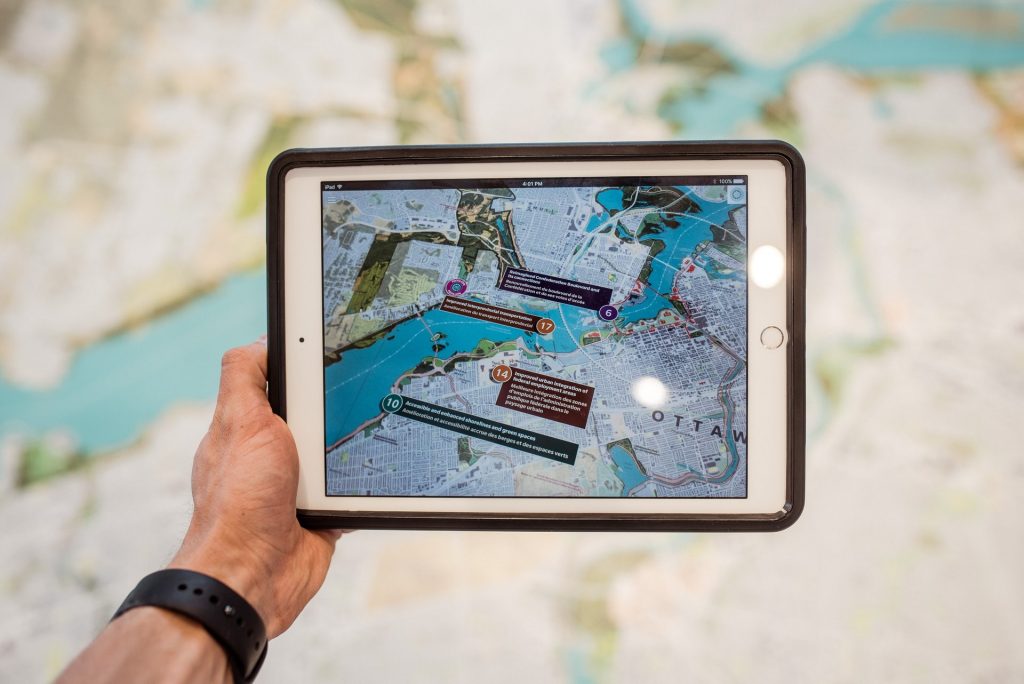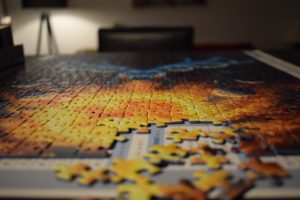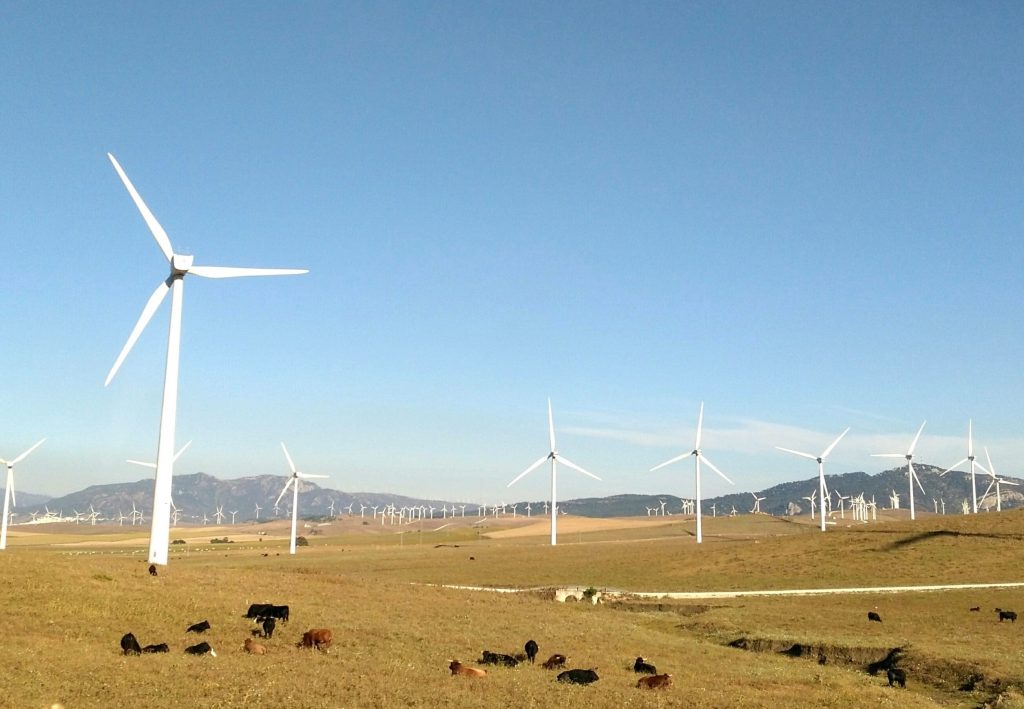News and Views
Enviro News and Views: The 8 Most Interesting Environmental and Sustainability Conversations from the Past Month
With solar power becoming the least costly power resource to the rising sea levels: check out this collection of the 8 most interesting environmental and sustainability discussions for this month. We aim to keep you informed, engaged and part of the ongoing scholarly conversations.
- Richard Mosse’s camera captures topographic images of environmental damage in the Amazon.
- Greater the diversity in the population of pollinators, the more stable will be the food systems.
Boosting bee diversity can help stabilise crop production – new research (theconversation.com)
- Garbage incinerators in the EU are coming under scrutiny for their large carbon footprints.
In Europe, a Backlash Is Growing Over Incinerating Garbage – Yale E360
- China’s continued dependence on coal affects its decarbonization plans in the long run.
Despite Pledges to Cut Emissions, China Goes on a Coal Spree – Yale E360
- Solar power, the least costly power source, is set to become cheaper by 2030.
Inside Clean Energy: What Happens When Solar Power Gets Much, Much Cheaper? – Inside Climate News
- Earth’s climate change vital statistics are captured to highlight the crisis and where it is heading.
Global heating: the vital statistics from a warming world | Environment | The Guardian
- How green an electric car is depends on which source of power it taps into.
How Green Are Electric Vehicles? – The New York Times (nytimes.com)
- Sea levels are rising but land in coastal areas is sinking faster.
Sea levels are rising fastest in big cities – here’s why (theconversation.com)
Socially-Responsible Real Estate Development (Part I)
This is a guest post by Dr. Lawrence Susskind, Ford Professor of Urban and Environmental Planning at MIT. One of the founders of the field of environmental dispute resolution, he has been teaching at MIT and Harvard for 50 years.
A few years ago I built a MOOC (an open course online), ‘Socially-Responsible Real Estate Development’, which aimed to help anyone engaged in real estate development, or any aspect of city redevelopment, think hard about their social responsibilities.
Most discussion of social responsibility focuses on what is called Corporate Social Responsibility (CSR). That is, what do corporations need to do to meet their social responsibilities? CSR is basically a form of “corporate self-regulation” or “active compliance” with the “spirit of the law,” “ethical standards” and “national or international norms”. By now, after several decades of discussion (and some serious scholarship), CSR advocates are prepared to make the case that corporate actors will have an easier time attracting the workers they want, enhancing their reputations and differentiating their brand, reducing regulatory scrutiny and improving relationships with their suppliers if they take environmental sustainability seriously, get involved in the communities where they operate (often through charitable giving) and avoid false advertising (and engage is what is known as ethical marketing). So, if corporations do “the right thing,” engage in corporate philanthropy and behave ethically they can count themselves as socially-responsible. 
I have a different view. Imagine a large real estate investor who is thinking of building a mega-project outside his own country; say, in a developing country. With the help of local partners, he finds a site for a large, gated, mixed-use development that will take a decade or more to complete and cost billions of dollars. If he succeeds, he will make a lot of money. He hires consultants (some local, some from his home country) and prepares a marketing brochure that includes images of the amazing project he has in mind. He initiates preliminary conversations (behind closed doors) with key political figures in the region to win their support. And, based on these conversations, he takes on local equity partners. He is assured by these partners that they will have smooth sailing when it comes to getting the regulatory approvals they need. He begins to make highly visible donations to local business organizations and seeks as much media attention as he can get. In the formal submissions he makes to whatever agency has final review power, he highlights his commitment to “green” building and promises to set aside a share of construction jobs for local workers. Most CSR-types would say that he is acting in a socially-responsible way.

As he begins to market his project, it is clear to everyone (from the images on the giant posters on the site and the materials handed out in the showroom) that the project is aiming to attract a class of international investors and residents who look nothing like the vast majority of people in the region or in the communities near the site. His media consultants succeed in planting newspaper stories highlighting the tax revenues his project will generate for the local and state government. These stories also refer to the substantial grants that the national government has offered the developer and the local community to underwrite the infrastructure required within the gated community. The developer argues that his mega-project will be almost self-sufficient in terms of its energy production, waste disposal, and provision of social services. In the process of filling wetlands and assembling the land for the proposed project, however, environmental interest groups begin to complain that the project will be diverting too much water away from existing settlements. And, they are concerned that the gated community will not be fully integrated into (or managed by) the local and metropolitan agencies and service systems that already exist. Some international environmental organizations express worries as well. They are concerned that internationally protected environmental areas will be sacrificed. Some local political groups ask why there has not been a more careful study of the potential environmental and social impacts the proposed project might have. The developer points to (1) the extensive studies he has done that led to the “green” design he is pursuing; (2) the “approvals” he has already gotten from local and state officials; (3) the charitable contributions he has made and will make to local organizations because he intends to be a good neighbor; and (4) his record (in his own country) as someone who takes his corporate social responsibilities seriously. He claims to have met all prevailing regulatory requirements.
It is easy to see why corporate philanthropic contributions do not necessarily equal socially-responsible development. Merely generating some “social good” beyond the interests of the developer is not enough. Reaching informal agreements (or winning political support from a few key officials in the region or the country) is not the same as ensuring that the concerns of local stakeholders (i.e. the people most likely to be adversely affected by a mega-project now and in the future) are met. Obeying the law, to the extent that regulatory requirements are spelled out and enforced, is not enough. Claiming that you “always” take account of your “triple bottom line” (i.e. seeking to have a net neutral environmental impact, a positive social impact and, of course, achieve financial profitability), and that you adhere to ISO 26000 norms (the best practices prescribed by the International Standards Organization) do not guarantee socially-responsible real estate development.
You could imagine how a massive real estate project could displace long-time poor residents of an area, claim a disproportionate share of scarce natural resources, radically alter culturally significant patterns of everyday life and leave a number of groups worse off, even as the developer demonstrates that his project will have a positive impact, he will behave ethically, and he will make philanthropic contributions to the area. The balancing of competing stakeholder interests, now and over time, is the issue. Values and conflicting interests need to be reconciled in a transparent way, and not all can be easily factored into a comprehensive benefit-cost analysis. The problem for all the parties is how to meet their conflicting interests in an effective and efficient fashion. I don’t think we can rely on standard government agency reviews to achieve such balance.
Well then, how can such balance be achieved?
My MOOC (Socially-Responsible Real Estate Development: Using Environmental and Social Impact Assessment to Reconcile Conflicting Interests) — that has been offered since 2017 by the Sam Tak Lee Laboratory for Real Estate Entrepreneurship at MIT — has taught how conflicting interests can be balanced. My focus when creating the MOOC was on the process of social and environmental impact assessment. This is the only way to guarantee the direct engagement of all relevant stakeholders; and, the ONLY way to achieve socially-responsible real estate development on a case-by-case basis. The good intentions of the developer are not enough. The physical design of the project is not in-and-of-itself a measure of socially-responsible real estate development. It is only by engaging representatives of ad hoc stakeholder groups, with the assistance of a professional (neutral) facilitator, in a joint problem-solving process, that socially-responsible real estate development can be achieved. The problem-solving I am talking about needs to focus on how the developer, in conjunction with local stakeholders, regulators, independent technical advisors, and non-governmental advocacy groups can ensure that conflicting interests are resolved fairly, in ways that take account of the culture and values of the existing area. The tools for doing this are well developed: environmental impact assessment (EIA), social impact assessment (SIA), and collaborative adaptive management (CAM). I also argue that these tools should be used regardless of the extent to which they are legally required. My measure of whether socially-responsible real estate development has been achieved is the extent to which good-faith efforts have been made to meet the conflicting interests of the relevant stakeholders, taking account of technically-sophisticated forecasts and assessments produced by analysts working for all the stakeholders.
In the MOOC I review exactly what ought to be done at each step in such a collaborative review process. And, I think I can make this case (although slightly differently) even in countries that have less of a democratic tradition of public engagement. I review and illustrate the practical aspects of getting this work done in a reasonable amount of time at the lowest possible cost. And, I emphasize the important role that only a neutral facilitator can play once a large number of stakeholders agree to participate in face-to-face problem-solving. Of course, the interactions I am describing do not substitute for or pre-empt government decision-making.They precede it.
In part II, I will review in more detail the ways in which EIA, SIA and CAM have been used (and abused) over the past several decades in the United States, Europe and elsewhere. In this first post, my goal was to reframe the definition of social-responsibility – moving away from the focus on corporate philanthropy. I want to make the case that creating “shared value” from the standpoint of all the parties involved is a more appropriate way to define social responsibility. Most of all, I want to challenge the assumption that traditional entrepreneurial models (i.e. doing well by doing good) can achieve socially-responsible real estate development. More is required, particularly a commitment to direct stakeholder engagement.
Big Data, Urban Science and the Search for New Ways of Improving Life in the City
This is a guest post by Dr. Lawrence Susskind, Ford Professor of Urban and Environmental Planning at MIT. One of the founders of the field of environmental dispute resolution, he has been teaching at MIT and Harvard for 50 years. Find out about our Anthem series ‘Big Data and Sustainable Cities’ here.
Imagine you had all the data you could possibly want about a city. I’m talking about real time readouts of all inputs and output, along with documentation of public satisfaction levels with all aspects of city life. Further, presume you had access to similar information for other cities as well, so you could see trends and patterns. What might you do with all this information to help improve the quality of life in the city?
There are some urban planners and city administrators who believe that if they had that kind of information they would be able to figure out when and how to spend public money, allocate equipment and personnel and restrict and support private efforts most efficiently. They also think they could use the same data to anticipate certain tipping points so that traffic snarls could be avoided before they happen, public works staff (including police and fire) could be deployed where they would be most needed, and infrastructure repairs could be managed with minimal disruption. With such information, the presumption is, water, electricity and other city resources could be priced and deployed on a real-time basis in the most cost-effective way possible. Empty housing and commercial space could be repurposed almost immediately, and priced to match the city’s urban development objectives. Taxes and fees could be collected electronically while feedback from residents could be shared with officials on a continuous basis. With the right kinds of electronic monitoring (including sensors of all kinds), sufficient data collection, investment in high-level analytic capabilities and appropriately trained staff, a city could become a “smart city.” All this digitized data could be displayed in visual form — across multiple platforms – so that everything would be easy to read and understand.
Of course, knowing what problems a city faces, and even understanding what’s causing them, is not the same thing as being able to respond effectively. The availability of real time data, even with the most advanced application of artificial intelligence, won’t make it clear who ought to do what, in what order, in what way and for whose benefit. These are political choices: “is” does not lead directly to “ought”.
One school of thought, promoted by some economists and engineers, assumes that the goal of city management should be to maximize efficiency – eliminate waste and stretch every dollar as far as possible. They want to make sure publicly that tax revenue, fees and intergovernmental transfers are allocated in the most cost-effective fashion. If the goal is to collect trash, arrest criminals, clean-up air and water pollution, or fight climate change, money shouldn’t be wasted in the process.
A second school of thought, inspired by ecologists and advocates of sustainable development, believes that every dollar of public spending should be used to meet economic, environmental and social needs simultaneously, in ways that take account of long-term needs. Efficiency in the short-term isn’t as important to these thinkers as long-term sustainability (which includes meeting the needs of both current and future generations in as fair a way as possible). All the data in the world won’t make it clear what ought to be done. In a democracy, such choices need to be made through a messy process of reconciling conflicting interests and values in which the population participates directly. Efficiency isn’t always the highest priority goal.
My own university, MIT, has recently launched a new major in Urban Science and Planning with Computer Science. This brings together faculty from urban planning, information science, electrical engineering, city design and the applied social sciences to prepare undergraduates to build and operate smart cities. Other universities, such as NYU, Northeastern, Carnegie-Mellon, John Hopkins, University of Illinois, University of Rotterdam and others have also launched undergraduate and graduate degree programs that seek to merge teaching about big data and urban studies.
As faculty in all of these programs try to decide what skills and knowledge they want a new generation of urban scientists to master, there are six questions I think they need to confront:
- What do we mean by a city? (Are they talking about activities that take place within a municipal boundary, or will they focus on a larger set of regional, national and international forces that shape urban life more generally?)
- Do they think that privacy is a concern? (Do they assume that any and all information that can be collected, should be collected? And should this information be available to anybody who wants to use it? Can people or organizations opt out and keep information about themselves private?)
- How will we fend off cyber-attacks on critical urban infrastructure that have already begun? (If urban science means greater centralization of information and data management, won’t that increase vulnerability to attack?)
- Who do they think should be in charge of designing and managing big data systems and setting the standards used to make judgments about what’s working well and what’s not? (Will this be a managerial task assigned to various government agencies, or will elected officials be accountable for how all this information is collected, analyzed and interpreted? Will new laws be required to ensure that individual and organizational rights are protected? Will this require federal, state or local legislation? Where will enforcement responsibility sit?)
- Will they be working from and toward an idealized model of an efficient city, or will they work to preserve historical and cultural diversity and variation? (I presume that students from all over the world will want to participate in these programs? Won’t the differences in culture, laws, and history require very different ways of applying the new urban science in each country? Should we assume that this is basically a technical education and teach a kind of “one-world view”? Or, would that be a terrible mistake?)
- Are the universities involved aiming to prepare public employees (whose job it is to serve the public interest), or are they training experts who will sell their services to the highest bidder?
The City As a Place vs. the City as an Idea
Most efforts to model urban dynamics assume that a city can be described as a series of “stocks” and “flows” within a set of boundaries. While there are always important “feedback loops,” many of which are likely to cause unexpected consequences, most modeling (and forecasting) efforts begin by postulating a set of boundaries. But, what if cities, as many urbanists contend, are largely a product of a great many extra-territorial (even global) forces? Capital or data flows originating in other parts of the world may have as much of an effect as economic and social forces originating in the city. Moreover, if we say that the operation of many of the sub-systems in a city reflect the ways that groups of people or institutions think about things – their perceptions — how do we include these in the models we teach students to build? The city is a physical space affected by global geological and ecological forces. It is also an idea shaped by millions of individual perceptions. Will it be possible to make sufficiently simplified models of the city to generate useful insights and predictions?
What’s Confidential and What’s Not?
Assume we can answer the first question, and we know which data are required to make a city substantially smarter. Gathering some of these data will require tapping into otherwise secure or private data sources. And, even if we argue that individual identities will be scrubbed, should people and organizations be forced to give up their privacy in the name of the greater good? In the United States, we have seen a version of this question play out as a National Commission on Elections and Voting demanded that all 50 states turn over voting data that may reveal how specific individuals voted. When it comes to financial records (including tax returns and credit card expenditures), even if this data is crucial to modelling how a city is doing, should individuals have a right to keep such personal data confidential? What ethical obligations will we impose on a new generation of big data analysts or urban scientists?
Cyber-Security in the Urban Realm
Urban infrastructure is already under attack from hackers who seek to hold energy, medical, water, sewage and other systems hostage. Each new layer of encryption added in response just ups the ante. These systems are vulnerable because individuals are not as conscious of their cyber-security responsibilities as they should be. Solutions will require further technological innovation and investment, but that won’t be sufficient. What will we teach a new generation about cyber-security and how to maintain it? And, given the vulnerability of critical urban infrastructure to global attack, should that affect what we guarantee with regard to privacy and control over personal data?
Knowledge, Power and Authority
Let’s say a city has put together a comprehensive data gathering, analysis and visualization operation. Who will have access to the raw data? Who will have the right to publish analyses of the information that has been collected? Will the city be willing to share assessments of things that residents think are going badly? Will those who want to challenge current office holders be allowed access and permitted to publish any analysis they like? Who will make decisions about how data should and should not be interpreted? It’s my assumption that managers of smart cities will have “to do” lists that far exceed their resources. Setting priorities (often in real time) will require quick decisions, faster than the public can follow. If all big data about cities were open sourced, would that allow more citizens to be involved in helping to make decisions that are going to affect them? While real time referenda might be possible, is that how cities should set priorities and make judgments?
Is There an Ideal City?
Urban planners are very place-oriented; data scientists are not. Urban planners want to preserve the special historical and cultural features of each city. Data scientists, on the other hand, are looking for rules of thumb to describe the most efficient ways of delivering goods and services in general. They might be inclined to disregard inefficiencies that are a by-product of local history, culture or values. There’s no point collecting data if there’s no intention to use it, but putting all these data to use means measuring how things are going compared to some benchmarks. Should benchmarks be unique to each community? Or, is the goal of merging big data and urban science to create “ideal benchmarks” (based on studies of many cities over time)? Should urban science be practiced differently in different cities, let alone different countries?
Public Sector vs. Private Sector Careers
Urban planning education in North America has been provided by major colleges and universities for more than 80 years. The majority of graduates of such programs aspire to work in the public sector or in civil society (e.g. NGOs or public interest organizations). This is true regardless of where students originate. Of course, some graduates find private sector jobs, either temporarily or permanently in consulting firms or corporations. Whether they are headed to the public or private sector, students studying urban planning tend to focus on ways of meeting the needs of the poor and the disadvantaged; they start with a theory of market failure and look for ways of using public-private partnerships, regulation, public investment or political advocacy to meet the needs of those for whom the market tends to fail. The engineers and scientists likely to be drawn to these new urban science programs may not be so public sector-oriented. Will the new urban scientists/big data managers who graduate from these programs be public sector/civil society or private sector-oriented?
I see the emergence of interdisciplinary urban science programs around the world as a good sign. Merging the capabilities of scientists and engineers with applied social scientists, designers and urbanists interested in the life of urban residents would be a positive development. We need to provide all the help we can to people in cities trying to make adjustments and reforms that reflect a clear-headed awareness of the complex dynamics they face. I worry, though, that some universities moving in this direction may pay too much attention to the advice of economists and management gurus obsessed with numerical trends, who are willing to focus on correlation because they don’t have the tools to understand causal dynamics. I hope that the applied social scientists and urban planners will succeed in ensuring that progressive values like concerns about fairness and sustainability at the core of the training of a new generation of urban scientists. I’m certainly glad that most of the people involved in these new efforts appear to be committed to blending schools of thought that have operated separately for too long.
Interested in how big data can help improve lives in cities? Find out about our Anthem series ‘Big Data and Sustainable Cities’ here.
Enviro News and Views: The 8 Most Interesting Environmental and Sustainability Conversations from the Past Month
From carbon tracking to fighting deforestation: check out this collection of the 8 most interesting environmental and sustainability discussions for this month. We aim to keep you informed, engaged and part of the ongoing scholarly conversations.
1. Why carbon tracking and reporting is necessary to hold corporations accountable 
More and more companies are pledging to reduce their carbon footprint as a response to increasing pressure from the public, who are becoming significantly concerned about the devastating potential of climate change. Despite this, many still struggle to accurately measure the full impact “from corporate headquarters to global operations to supply chains”. Breakthrough climate accounting technologies may provide the solution to holding businesses accountable.
2. Net-zero, carbon-neutral, carbon-negative… confused by all the carbon jargon? Then read this
As many countries commit to net-zero emissions, the latest being the US, after Joe Biden’s presidential win, some may wonder what, exactly, does this term mean? Jessica Allen offers a useful walk-through of all the carbon jargon, from net-zero to carbon-negative. As these terms become more and more prevalent, it is key to understand what they mean, and how they differ.
3. The Capitol Riot and Climate Disinformation: They’re more closely related than you might think
John Schwartz writes for the New York TImes about how the capitol riot ties in with climate disinformation, discussing how ‘for those who cover climate change for a living, the blatant lies about election fraud that fed the mob felt very familiar’.
4. Breaking Down the Case for Massively Scaling up Carbon Removal Tech
New peer-reviewed research lays out a case for very quickly scaling up machines which pull carbon from the atmosphere. Ben Geman breaks down the research: the big picture, why it matters, the numbers and more.
5. Can We Enjoy Meat and Seafood and Save the Planet? 
As the unsustainability of our current food farming processes becomes ever-more starkly apparent, cell-based meats and seafood have been heralded as the future of food. But what are they, and how do they work? Tiffany Duong explains how these high-tech food innovations take ‘the animal out of the meat” and create “seafood without the sea”. Perhaps meat and fish are still on the menu.
6. Over 100 cities have made public transport free – others should follow
Richard Webb argues the case for more cities making public transport free for all. After COVID-19, many people feel that they will use their car’s much more post-pandemic – despite citing concerns about climate change. How can we encourage people back-on-board with public transport?
7. Global Temperatures Could Stabilize, Scientists Say, If We Do The Following
As more and more countries pledge to hit net-zero emissions by 2050, scientists hope that global warming can be more swiftly curtailed than originally thought, due to more recent understanding of the implications of getting to net-zero. It’s not all doom and gloom, but it’s not going to be easy.
8. Fighting deforestation should be a top priority for 2021, and here’s how it can be 
2020 brought with it a rise of the corporate tree planting movement, as businesses pledged funds to one of nature’s best solutions to rising carbon levels. Looking ahead to 2021, it is necessary that businesses address the root of the issue: by pledging to eliminate deforestation itself. Heather Clancy writes about how this can become a top-priority.
Overcoming the Not-In-My-Backyard (NIMBY) Syndrome
This is a guest post by Dr. Lawrence Susskind, Ford Professor of Urban and Environmental Planning at MIT. One of the founders of the field of environmental dispute resolution, he has been teaching at MIT and Harvard for 50 years.
Opposition to renewable energy facilities, particularly wind power, is often spoken about. Wind advocates were asked on National Public Radio how they might overcome such local opposition — dubbed the NIMBY syndrome — in the future. The spokesperson said, “We’ve got to get in there earlier and educate people”. Wrong! How arrogant! You think people are opposed because they don’t understand? No, they’re opposed because the “costs” and “impacts” ON THEM are likely to outweigh the likely benefits TO THEM. The only way to overcome the NIMBY syndrome, regardless of the type of facility, is to make sure that the overwhelming majority of people in the area believe that the benefits TO THEM if the facility is built will outweigh the costs and impacts THEY are likely to experience.
Why is this so hard to understand? Facility siting scholarship has been clear about this for almost forty years. (See O’Hare, Bacow and Sanderson, Facility Siting and Public Opposition, Wiley, 1983). More than twenty years ago, we figured out how to overcome the NIMBY Syndrome and crafted what we called The Facility Siting Credo (Lawrence Susskind, Negotiation Journal, Volume VI, Issue 4, October 1990, pp. 309-314). The Credo was tested nationally against the siting experience in a great many American cities (Howard Kunreuther, Kevin Fitzgerald, and Thomas Aarts, Risk Analysis, Volume 13, Number 3, 1993, pp. 301-318).
Every siting effort starts with a small percentage of people who favor whatever is being proposed, probably less than 10%. These are usually people likely to gain personally if the facility is built, maybe by selling their land directly to the facility developer). And, as Mike Elliott, a Professor at Georgia Tech demonstrated many years ago, an equally small percentage of people usually start out opposed. Typically, these are people likely to bear disproportionate costs — because they live right next to whatever is being proposed. While there are some people in every community who pay no attention to anything (maybe 10%), the vast majority — 60% – 65% — fall into a category called “Guardians”. It’s what this middle group does that leads to most facility siting controversies.
We know two things about Guardians (thanks to Professor Elliott). First, if they think a licensing or permitting decision is unfair, they will side with the opponents. And, second, they want to hear whatever the arguments are for and against a proposed facility “on their merits”. If believable information isn’t presented in an open forum where questions can be asked of experts and proponents in a problem-solving format, they will side with the opponents. NIMBYism occurs when these two facts about Guardians are ignored.
Let me get back to the wind energy spokesperson on NPR. If proponents put out one-sided information to help “sell” citizens on the need for new renewable energy facilities, or try to convince them that there won’t be any adverse impacts, that’s sure to backfire. The Facility Siting Credo indicates how to avoid these and other mistakes, but I’m just going to emphasize the three most important principles in the Credo (and that are, for the most part, ignored in most facility siting disputes in the United States because proponents are typically way overconfident).
- Engage in joint fact finding, not one-sided “educational” efforts.
- Let all the key stakeholders choose a mediator to help manage a consensus building process.
- Promise to compensate potential “losers” and hold any adversely affected neighborhood harmless.
Most environmental impact assessments are prepared after proponents have committed to build a facility. So, whatever data or forecasts are generated tend to be discounted by opponents as nothing but propaganda on behalf of decisions that have already been made. This is exactly the kind of thing that causes Guardians to side with the opponents. The Cape Wind Project in Massachusetts (the first off-shore wind farm in the United States) was caught up in what must have been the most elaborate regulatory review process in energy facility siting history in the United States – leading to the stalling of the project. Whatever evidence was presented by proponents was then countered by opponents. Everyone had made up their minds long before studies of the likely impacts of the facility became available. By the time the formal regulatory reviews took place, it was impossible to get all the parties in the same room for a civil conversation. Maine, however, has taken a different tack. The state has pre-reviewed all possible off-shore wind sites and noted publically those that seem to make the most sense in technical, economic and aesthetic terms. We’ll see whether private companies proposing to build in one of these pre-designated and pre-reviewed areas face the same opposition as Cape Wind. Joint fact finding regarding the likely benefits, impacts and costs of a proposed facility tends to be a lot easier if they take place before a specific site has been selected.
Most public involvement in government decisions in the United States is a joke. Hearings and so-called town meetings offer trivial opportunities for opponents and proponents to make short statements that won’t convince anyone of anything. They are all for show. The real battle takes place in the media and behind the scenes as each group does its best to lobby the elected and appointed officials involved.
Only an extended public dialogue, when questions can still be asked and answered before the Guardians have taken sides, is likely to lead to believable analyses of the merits and demerits of each proposed technology, location, design, or mitigation strategy. We know how to do this, but it requires that some of the money that will inevitably be spent on lawyers and litigation be used to pay professional mediators to facilitate authentic problem-solving or consensus building efforts. This is not about public relations (which is what the wind spokesperson meant by “education”). Rather, it’s about public learning through joint inquiry facilitated by a professional neutral. Most people don’t even realize that such a thing is possible! Not everyone needs to be involved. Mediators know how to prepare conflict assessments that can bring the right stakeholders to the table, to work on a jointly crafted agenda, with a range of expert advisors to help them. Such public inquiries can now be made entirely transparent on the web.
Now we get to the third principle at the heart of the Facility Siting Credo. Professor Howard Raiffa and others have written about this extensively. Unless you “hold potential losers harmless” they will oppose anything that is likely to hurt them. If you want to build a new facility in a particular location, there is no question that a small number of people living adjacent to the site will be opposed. Telling them that the “gains” to everyone else outweigh whatever “losses” they might experience — so they should support the project — is crazy. It’s not rational. And, as Professor O’Hare noted years ago, it is easy for that small number of people to find each other. And, they have a substantial incentive to try to block the facility. On the other hand, all the potential gainers (who could number in the millions if we are talking about switching from fossil fuels to clean energy) are usually unaware of the rather small gains they might realize over the long haul. They don’t have an incentive to organize themselves.
If the gains to the gainers far outweigh the losses to the losers, that’s not going to stop the small number of potential losers from trying to block a facility. And, since regulators and public officials don’t employ the Facility Siting Credo, they play into the hands of that small group who can easily recruit Guardians by complaining that decisions have been made without them and no one is doing anything to compensate the losers. Instead of 10% opposed, the opposition grows to more than 50%, and public officials have no choice but to fight the project.
Compensation to potential losers is not as tricky as it might seem. Most people haven’t thought about the difference between compensation (something good) and a bribe (something bad). Also, compensation doesn’t have to take the form of financial payments. A facility developer could promise to remove something that has for a long-time been a problem — like cleaning up a contaminated site somewhere else in the area if they are allowed to build their new facility.
A bribe is an illegal payment which people would be embarrassed to have made public. But compensation, awarded based on clear principles that ensure that everyone in the same category is treated equally, is not a bribe. Community benefit agreements seek to ensure that everyone in a community will benefit when a new facility of some kind is built. Some of the gains to the gainers (especially proponents who stand to make a profit) are, in effect, taxed (before they go to the gainers) and used to ensure that the small number of opponents who really stand to lose will be made whole. Some gains are also used to compensate neighborhoods or communities who experience real losses so that everyone else in the city or region can benefit. Compensation payments, or compensatory measures to eliminate a problem in the area, ensure that all those who bear disproportionate costs (even small ones) realize some tangible benefit over and above the general benefits that all the gainers will get if a facility is built. Construction jobs, for example, ought to be held for those adversely affected. Property tax abatements (or at least property tax insurance) should be offered to those who live near a new facility. This will hold them harmless against any property value losses caused by the new facility. The key is to ensure that potential losers are fully compensated. This will lead the Guardians to side with the proponents and NIMBYism will melt away.
If there is no way to tax the gainers, and capture some of the benefits to compensate the losers, then the proposed facility is probably a mistake — it’s either in the wrong location, using the wrong technology or being proposed at the wrong time.
Now, there are some opponents who just don’t care what they are offered or what their neighborhood is offered (and, again, I’m not just talking about money). They oppose a new facility for ideological reasons or because they just don’t want things to change. In real life, when the Facility Siting Credo is followed, the folks in this category (ideological opponents) are a very small minority (fewer than 5% of the total population of a community or region). Elected and appointed officials (and courts) who see that every effort has been made to use some gains to compensate losers and make the host community whole (through an open problem-solving conversation managed by a professional mediator) are not likely to block what 95% of the community supports. So, the trick is to get the Guardians to side with the proponents.
Please, no more whining about NIMBY. Just adopt the Facility Siting Credo and run the process the right way.
Enviro News and Views: The 8 Most Interesting Environmental and Sustainability Conversations from the Past Month
From spending $1000 to stop climate change to a jigsaw puzzle made of ancient dust: check out this collection of the 8 most interesting environmental and sustainability discussions for this month. We aim to keep you informed, engaged and part of the ongoing scholarly conversations.
1. How should I spend $1,000 to stop climate change?
Umbra answers the question as to how $1,000 is best spent in order to help the environment. This article is full of crucial information as to which organisations are worth funding, and how complicated it can be to rank the climate solutions most worthy of funding. Find out more here.
2. How banks could bail us out of the climate crisis
Banks are beginning to reconsider their massive lending to the fossil fuel industry, in part due to pressure from activists. Bill McKibben explores how banks could, potentially, be one of the solutions to the climate crisis, instead of one of the fuellers of it. Find out how here.
3. A jigsaw puzzle made of ancient dust 
From a South Pacific expedition, a research team brought back an object which can help explain the severe cooling of the last Ice Age. Could an understanding of the composition of dust help to learn more about climate change? Find out here.
4. Climate crisis breaks open generational rifts in US families
Young people are becoming increasingly concerned about their futures due to the increasing threat of climate change, with young activists such as Greta Thunberg leading school walkouts and demanding action. Often however, a sense of despair and outrage among young people over global warming is being met with indifference by their older relatives. Read about the significance of these generational rifts here.
5. The ‘market’ won’t save us from climate disaster. We must rethink our system
Robert Devine explains how the unnatural disaster of climate change is a direct result of the structure of our economic system, making climate change one of the greatest market failures ever seen. Find out about how, by rethinking our systems, we could become forceful citizens.
6. Climate explained: why do humans instinctively reject evidence contrary to their beliefs?
As part of the ‘Climate Explained’ series, this article explores how we can encourage people to change their minds about climate change, the causes of climate change denial and how we might begin to persuade people to believe differently. Read it here.
7. Are animals eating all the human food? 
A question of diet: if humans stopped eating animals, would there be enough grain to feed the world? Umbra explores the pros and cons of a vegan/vegetarian diet, and how significantly dietary decisions impact on our carbon footprint.
8. Racial equality requires environmental justice
Not all communities are affected equally by the consequences of climate change. Numerous studies have proven that “black and brown communities are disproportionately impacted by pollution, including toxic waste sites, air pollution, pesticide exposure, unsafe drinking water, and climate disasters”. Environmental justice is an essential part of the fight towards racial equality. Find out more here.
The Effects of Climate Change Are All Local: Here’s What You Can Do to Help Manage the Risks
We’ve spent far too much time thinking about the global causes of climate change, and not nearly enough worrying about the local impacts that climate change is already having on coastal communities. The distinction is important. Most of the people pushing for reductions in greenhouse gas emissions are environmentalists or experts worried about future generations. But there is a very immediate constituency – the people being hit with higher costs for insurance, water and electricity, and those facing substantial property losses or a drop in business income today because of increased flooding and water shortages. People who live in a coastal community or on a river nearly anywhere in the world are a lot more worried about what’s happening right now, than what might happen to future generations if we don’t limit greenhouse gas emissions in the U.S., China, India and elsewhere. Climate change means too much water or not enough water in the wrong place at the wrong time! It means deadly heat waves. It means radical changes in natural places, animal and plant life and the onset of new diseases.
 Our book, Managing Climate Risks in Coastal Communities: Readiness, Engagement and Adaptation (by Lawrence Susskind, Danya Rumore, Carri Hulet and Patrick Field), published by Anthem Press, explores these issues. It tells the story of four coastal communities trying to take climate change-related risks seriously. What they are doing — and what we have helped them learn from their efforts — can help other cities and towns fast-forward the adoption of climate risk management measures that everyone agrees on. Here’s what these four communities in New England have done:
Our book, Managing Climate Risks in Coastal Communities: Readiness, Engagement and Adaptation (by Lawrence Susskind, Danya Rumore, Carri Hulet and Patrick Field), published by Anthem Press, explores these issues. It tells the story of four coastal communities trying to take climate change-related risks seriously. What they are doing — and what we have helped them learn from their efforts — can help other cities and towns fast-forward the adoption of climate risk management measures that everyone agrees on. Here’s what these four communities in New England have done:
1. WHAT WE DID: The “we” in this story is the New England Climate Adaptation Project (NECAP), a partnership based at the MIT Science Impact Collaborative and the not-for-profit Consensus Building Institute. Our close partners included the National Estuarian Research Reserve System, the University of New Hampshire, and four New England coastal communities. We prepared four Stakeholder Assessments—one for each partner town in Massachusetts, Rhode Island, New Hampshire and Maine. These involved interviews with several dozen officials, activists, business leaders and scientists. The scientists on our team prepared a local climate change forecast (estimating likely temperature, precipitation and sea level changes in the near term, mid-term and long-term) using downscaled regional climate models and long-term data from local meteorological measuring stations. With all this information in hand, we developed tailored role-play simulation (RPSs). These are “serious games” that ask participants to imagine that they are working in a community a lot like their own, trying to figure out what to do about possible climate risks. We organized several workshops in each of our four partner communities at which more than 100 – 150 people participated in the role plays in each place. The workshops were co-sponsored by a wide range of local environmental, business and public service organizations. The press attended. We used social media to generate as much interest as possible.
2. WHAT WE WANTED TO LEARN: We wanted to know if this approach to enhancing community readiness to address climate-related risks works. Does it give people a better understanding of the problems they face, the options open to them, the reasons that experts and locals think differently about what is happening and what ought to be done, and the costs of taking different actions? Does this approach to public engagement build capacity and political momentum? Does it change anyone’s mind? Does it legitimize the search for immediate “no regrets” actions as far as public spending is concerned? Does it help the community see why adaptation is a local (not a state or a federal) problem? To answer these questions, we used independent town-wide polling to establish a base line of public attitudes about climate change before and after the workshops, surveying more than 500 people. We held intensive debriefings with all participants at the end of each workshop. We interviewed almost 25% of the participants 4 – 6 weeks later to see what they remembered. We did statistical analyses of the results across demographic groups within each community, between those who participated in workshops and those who didn’t, and then compared the four communities in the four states. We prepared detailed Case Studies summarizing what we learned in each town. In the book, we summarize all of our findings.
3. RESULTS: A simple, but tailored one-hour game with a 30-minute debriefing can change minds with regard to the importance of climate change, the nature of climate risks, and the need for local action. People from almost all groups (except those so convinced that climate change is not a problem that they refused to participate) learned about the science involved, increased their sense that local governments need to act and became more optimistic that people in their community could and should act together to manage climate risks. Public officials and staff felt more empowered to take action in their respective spheres (public works, emergency response, health services, etc.) after seeing people’s hearts and minds change at the workshops.
 4. WHAT COMMUNITIES CAN DO. Communities facing climate change-related risks have a few different options: they can do nothing and hope for the best. They can invest in emergency preparedness so they are better able to respond and recover from crises. They can “retreat” from the most vulnerable areas. They can try to defend themselves by building protective infrastructure and adopting new policies, such as land use regulations and building codes. They can mix and match elements of each of these strategies. Whatever they decide, they will need widespread support because it will take public and private cooperation and a continuous, not a one shot, effort to bring all but one of these options to fruition. Individual landowners, businesses, environmental activists, public agencies and taxpayer groups will have to work together.
4. WHAT COMMUNITIES CAN DO. Communities facing climate change-related risks have a few different options: they can do nothing and hope for the best. They can invest in emergency preparedness so they are better able to respond and recover from crises. They can “retreat” from the most vulnerable areas. They can try to defend themselves by building protective infrastructure and adopting new policies, such as land use regulations and building codes. They can mix and match elements of each of these strategies. Whatever they decide, they will need widespread support because it will take public and private cooperation and a continuous, not a one shot, effort to bring all but one of these options to fruition. Individual landowners, businesses, environmental activists, public agencies and taxpayer groups will have to work together.
5. WHAT WE LEARNED: Above all, communities must enhance their level of readiness if they expect to address climate risks. They will have to provide opportunities for widespread public involvement in something other than a few “town hall” meetings at which pre-packaged information is handed out and people are lectured at. They will have to help taxpayers understand that there are “no regrets” moves they can make to reduce climate risks while simultaneously accomplishing other important objectives at the same time. For example, using this year’s open space preservation money to create natural barriers along the shore can provide storm protection for private property owners, reduce saltwater intrusion into freshwater wetlands (protecting underground water supplies), armour waste disposal and electricity infrastructure, and minimize flood risks.
6. OUR TAKEAWAY: The sooner the U.S. shifts its focus to reducing local vulnerability to climate risks (so that everyone can see what the costs are going to be year after year as climate change accelerates), the sooner there will be more of a political constituency that wants to get at the source of the problem. So, unlike many who worry that any talk of adaptation detracts from global efforts to push for mitigation (i.e. reduction of greenhouse emissions), we take just the opposite view. We think the political pressure for mitigation is not strong enough to push for a global action plan or new US laws because people don’t recognize the costs to them today. Now is the time to highlight what it’s going to take to help vast numbers of coastal and riverine communities all over the world avoid paying immense costs just to survive in the years ahead. When they see what it really costs to manage climate risks, we believe they will care much more about the underlying cause, and quickly become the missing constituency needed to push for global emissions reducing policies.
 7. WHAT CAN YOU DO? Get your community to play the serious games we have developed (or look for a range of local partners that will help adapt the games to your local conditions). You can download the role plays for free at localclimatechange.mit.edu. Do a simple, anonymous assessment to understand what everyone’s real views are at present on issues of climate change (you might be surprised!). Use our before-and-after surveys to document the shifts that occur once people start attending workshops and playing the right games. Get local officials and community activists to be the first to play the games and talk about what the results suggest for your community. Involve the local media in reporting the story. Adopt a consensus building approach to formulating a collective risk management plan for the community. Don’t wait for extensive state or federal direction — they are probably not coming anytime soon. Emphasize the search for no-regret options — things you can do right away that are good for multiple reasons AND will reduce your community’s vulnerability to sudden climate change.
7. WHAT CAN YOU DO? Get your community to play the serious games we have developed (or look for a range of local partners that will help adapt the games to your local conditions). You can download the role plays for free at localclimatechange.mit.edu. Do a simple, anonymous assessment to understand what everyone’s real views are at present on issues of climate change (you might be surprised!). Use our before-and-after surveys to document the shifts that occur once people start attending workshops and playing the right games. Get local officials and community activists to be the first to play the games and talk about what the results suggest for your community. Involve the local media in reporting the story. Adopt a consensus building approach to formulating a collective risk management plan for the community. Don’t wait for extensive state or federal direction — they are probably not coming anytime soon. Emphasize the search for no-regret options — things you can do right away that are good for multiple reasons AND will reduce your community’s vulnerability to sudden climate change.








